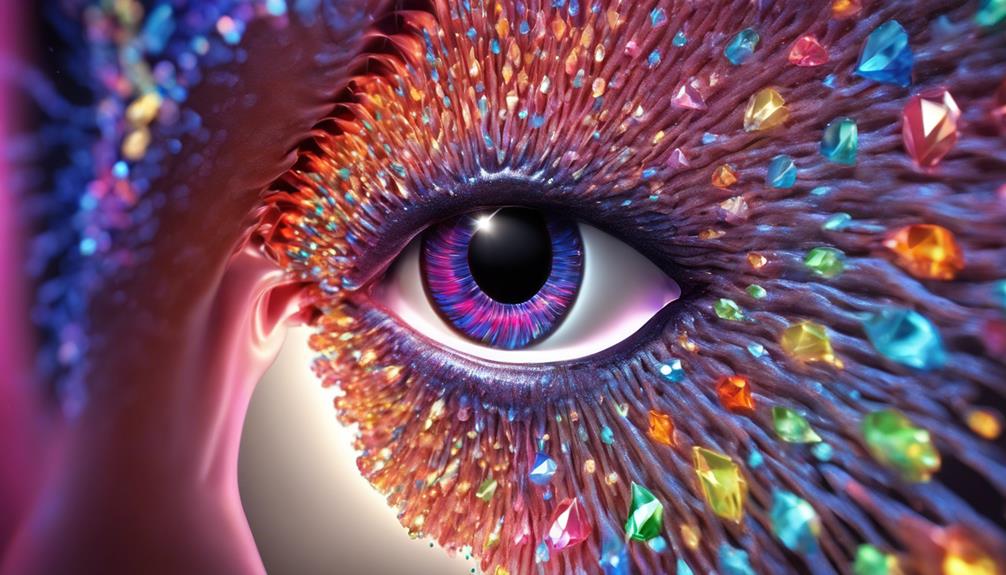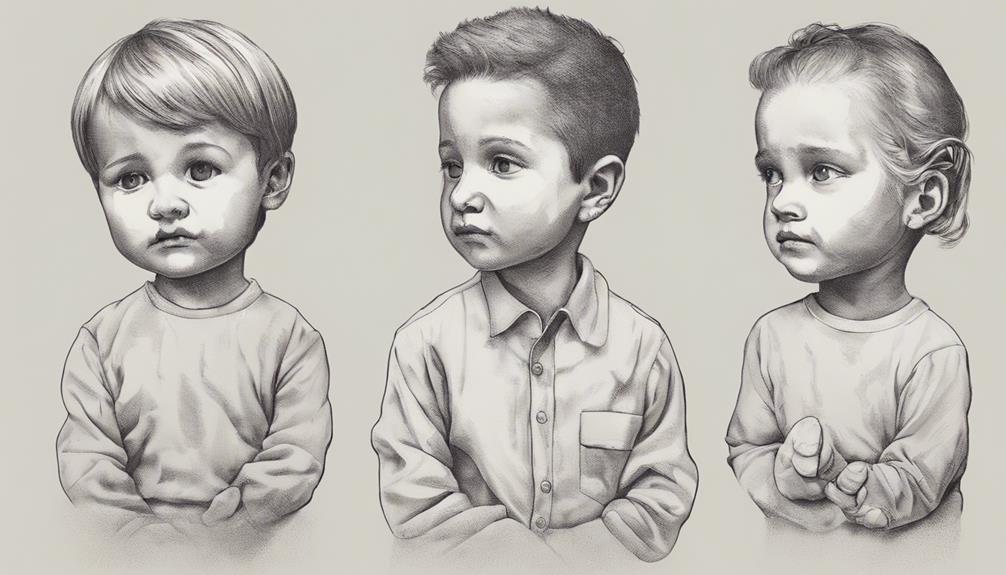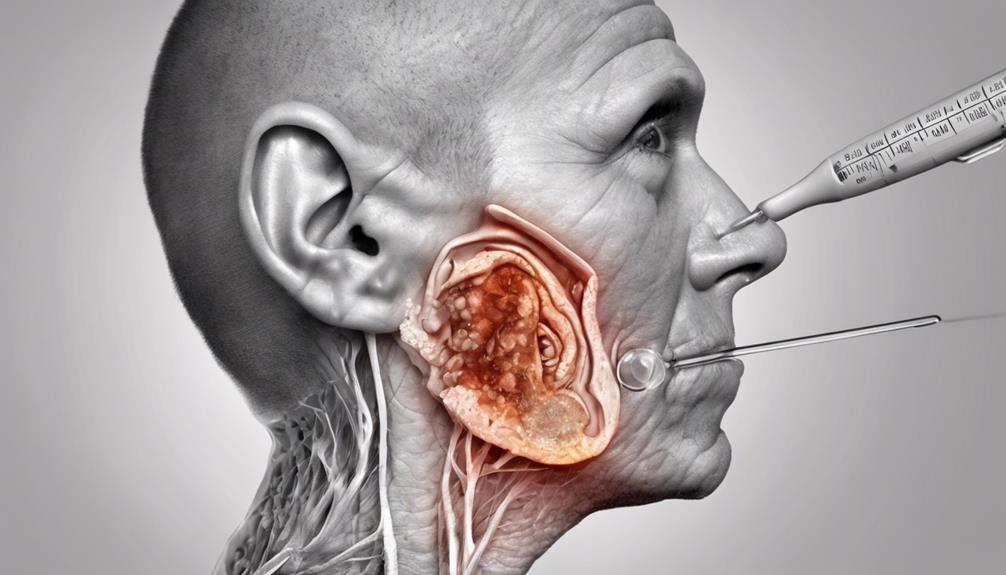Exploring the intricate mechanisms of our inner ear reveals the significant influence that ear crystals have on our hearing abilities.
The delicate balance maintained by these tiny structures is crucial for our overall equilibrium, but what happens when this balance is disrupted?
Understanding how ear crystals cause hearing loss unveils a fascinating journey into the complexities of our auditory system.
Join us as we unravel the mysteries behind this phenomenon and discover the impact it has on our everyday lives.
Key Takeaways
- Displaced ear crystals affect balance, potentially disrupting sound transmission.
- Inner ear disturbances from crystal displacement can impact hearing function.
- Proper diagnosis and management of ear crystals are crucial for minimizing hearing loss.
- Understanding how ear crystals dislodgement affects balance aids in managing potential hearing issues.
Understanding Ear Crystals
Our understanding of ear crystals, scientifically referred to as otoconia or canaliths, is fundamental in comprehending their role in maintaining balance and detecting changes in head position.
These tiny calcium carbonate crystals are housed within the inner ear and are essential for our sense of balance. In rare cases, when these ear crystals become dislodged and migrate into the semicircular canals, they can disrupt the normal functioning of the vestibular system, leading to a condition known as Benign Paroxysmal Positional Vertigo (BPPV).
This displacement can cause vertigo, dizziness, and a feeling of unsteadiness. The movement of these displaced ear crystals can also trigger abnormal stimulation of the inner ear's sensory hair cells, sending erroneous signals to the brain about head movements, further impacting our sense of balance.
Understanding the intricate relationship between these ear crystals and the inner ear is crucial for diagnosing and managing conditions like BPPV effectively.
Impact on Hearing Function

Understanding how displacement of ear crystals can impact hearing function involves recognizing the intricate connection between the delicate structures of the inner ear responsible for both balance and auditory processing. While ear crystals themselves do not directly cause hearing loss, conditions like Benign Paroxysmal Positional Vertigo (BPPV) can indirectly affect hearing due to inner ear disturbances. Displacement of these crystals can disrupt the precise mechanisms involved in sound transmission and processing within the inner ear, potentially leading to temporary or permanent hearing issues in severe cases. Proper diagnosis and management of BPPV and ear crystal displacement are crucial in minimizing the potential effects on hearing function.
| Effects of Ear Crystal Displacement on Hearing | |
|---|---|
| Disruption of Auditory Processing | Inner Ear Damage |
| Potential for Temporary Hearing Loss | Balance Disturbances |
| Connection Between Balance and Hearing | Proper Diagnosis |
Understanding the intricate relationship between ear crystals, balance, and hearing function is essential in addressing potential consequences that may arise from their displacement.
Symptoms and Effects
Symptoms associated with ear crystals include dizziness, spinning sensations, and lightheadedness, indicating their impact on balance and vertigo rather than directly causing hearing loss. Individuals with displaced ear crystals may experience a feeling of instability and unsteadiness, affecting their quality of life.
The displacement of these crystals disrupts the normal functioning of the inner ear, specifically the vestibular system responsible for balance. This disruption can lead to vertigo, a false sensation of spinning or movement, making simple tasks challenging and increasing the risk of falls.
The symptoms of ear crystals can vary in intensity, with some individuals experiencing severe dizziness episodes that significantly impair daily activities. Proper diagnosis and treatment are crucial to address these symptoms effectively and restore balance function. Seeking medical advice when experiencing symptoms like dizziness or vertigo can help in identifying and managing ear crystal issues promptly, improving overall well-being.
Diagnosis and Testing

Diagnosis of ear crystals typically involves a physical examination and a detailed review of the individual's medical history to identify associated symptoms and triggers. Specialized tests play a crucial role in confirming the presence of ear crystals and assessing inner ear function.
Here are four key diagnostic methods used in identifying ear crystals and associated issues:
- Dix-Hallpike Maneuver: This test helps provoke vertigo and nystagmus, aiding in the diagnosis of benign paroxysmal positional vertigo (BPPV) caused by ear crystals.
- Supine Roll Test: By moving the head in specific positions, this test can help determine the presence and location of displaced ear crystals within the semicircular canals.
- Video-Nystagmography (VNG): This test involves recording eye movements to evaluate inner ear and central motor functions, providing valuable insights into the condition of the vestibular system.
- Vestibular Evoked Myogenic Potentials (VEMP): VEMP testing assesses the function of the saccule and inferior vestibular nerve, aiding in the diagnosis of inner ear disorders like BPPV.
Treatment Options
Treatment options for ear crystals causing balance issues typically involve non-invasive maneuvers and lifestyle modifications to address symptoms effectively. The Epley Maneuver and Canalith Repositioning maneuvers are commonly used to reposition displaced ear crystals, aiding in the restoration of balance. These maneuvers can often be performed in a clinical setting by healthcare providers trained in vestibular rehabilitation. Additionally, lifestyle adjustments such as avoiding sudden head movements or positions that trigger symptoms can help manage the effects of ear crystals.
| Treatment Options | Description | Availability |
|---|---|---|
| Epley Maneuver | Series of head movements to dislodge and guide ear crystals back to the proper place in the ear canal | Commonly available |
| Canalith Repositioning Maneuver | Specific head and body movements to move displaced ear crystals out of the semicircular canals | Widely practiced |
| Lifestyle Modifications | Adjustments in daily activities to prevent triggering symptoms associated with ear crystal issues | Self-implementable |
Frequently Asked Questions
How Does BPPV Cause Hearing Loss?
BPPV, caused by displaced ear crystals, primarily impacts balance, not hearing.
The inner ear crystals responsible for BPPV don't directly affect hearing function.
BPPV-related vertigo and dizziness are the main symptoms, not hearing loss.
Hearing loss isn't a typical symptom or direct result of BPPV.
Treatment focuses on repositioning the crystals to restore balance, not hearing function.
What Causes Ear Crystals to Dislodge?
We've discovered that various factors can lead to the dislodgement of ear crystals. Head injuries, aging-related structural changes, inflammation, infections, or certain medications can all play a role. Additionally, sudden head movements or changes in position can cause these crystals to shift.
Understanding these triggers can help in preventing such occurrences and managing the associated symptoms effectively.
What Happens if the Crystals in Your Ears Get Messed Up?
If the crystals in our ears become dislodged or misplaced, it can result in symptoms like vertigo, dizziness, and a spinning sensation, commonly known as Benign Paroxysmal Positional Vertigo (BPPV).
This condition is caused by disturbances in the inner ear crystals affecting our balance, not our hearing. Treatment typically involves maneuvers to reposition the crystals to alleviate vertigo.
Understanding this distinction helps differentiate between balance issues caused by ear crystals and hearing loss.
How Long Does It Take for the Crystals in Your Ear to Go Back to Normal?
When ear crystals become dislodged, the time for them to return to normal can vary from days to weeks. Certain maneuvers like the Epley Maneuver can expedite this process.
Spontaneous resolution without treatment is also possible. The duration depends on individual factors and the severity of the condition. Adhering to proper diagnosis and treatment can hasten the return of the ear crystals to their normal position.
Conclusion
In conclusion, it seems that these tiny crystals in our ears, which are crucial for balance and hearing, can cause quite a stir when they go awry.
It's fascinating how something so small can have such a big impact on our well-being.
By understanding the role of ear crystals in conditions like BPPV, we can better appreciate the complexity of our inner ear system and the importance of maintaining its delicate balance.











